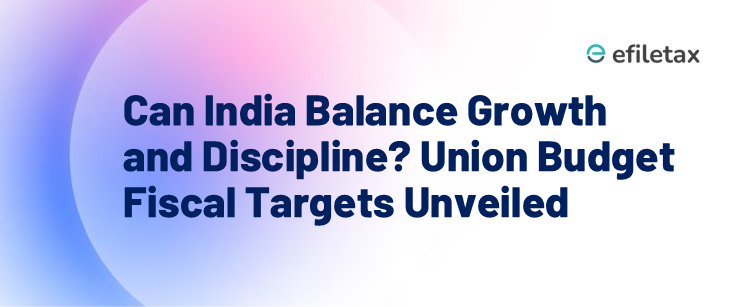
Govt Tightens Fiscal Purse Despite Economic Slowdown
India’s Union Budget is under the spotlight as the government remains firm on its borrowing and spending targets, despite a noticeable economic slowdown. With fiscal prudence at the forefront, policymakers aim to strike a balance between fiscal responsibility and growth priorities. Here’s an in-depth analysis of the fiscal outlook, borrowing plans, and anticipated budgetary measures.
Fiscal Deficit Target Holds Firm
In a bid to maintain economic stability, the government is expected to stick to its fiscal deficit target of 4.5% of GDP for the upcoming financial year. This marks a slight improvement from the estimated 4.8% deficit for the current fiscal year.
The strategy reflects a cautious tightening of the fiscal purse, emphasizing the need to manage India’s public debt-to-GDP ratio, which currently hovers at nearly 80%—significantly higher than other emerging economies. The government’s long-term aim is to reduce this ratio to 60%, underscoring its commitment to fiscal discipline.
Economic Growth Slowdown
India’s economic growth has decelerated sharply, with GDP growth for the July-September quarter slowing to 5.4%, compared to over 8.0% last fiscal year. This downturn highlights the challenges in sustaining private investment and job creation, despite significant infrastructure spending by the government.
One critical issue is the lack of well-paying jobs in a country where the majority of the population is under 30 years old. Limited employment opportunities have hindered household consumption, a vital driver of economic growth.
Budget Focus: Agriculture and Tax Reforms
Economists anticipate that the Union Budget will prioritise agriculture, which employs nearly 50% of India’s workforce, and explore potential income tax cuts to revive consumption.
While income tax cuts could provide immediate relief, experts caution that the impact may be limited, as only a small percentage of Indians currently pay income tax. Economists like Nikhil Gupta of Motilal Oswal suggest that energy tax cuts could yield broader benefits by reducing costs for both households and businesses.
Borrowing and Spending Plans
Gross borrowing for the next fiscal year is projected at ₹14.28 trillion (~$165.53 billion), while capital expenditure is expected to rise to ₹11.25 trillion, or 3.2% of GDP. This demonstrates the government’s continued commitment to infrastructure development as a means of boosting economic activity.
Since 2014, under Prime Minister Narendra Modi, India has seen significant policy reforms, including:
- Corporate tax reductions to encourage investment.
- Incentives to promote manufacturing output.
- A five-fold increase in infrastructure spending.
Key Recommendations from Economists
- Boost Household Income Growth: Economists argue that improving income growth, rather than short-term consumption, should be the government’s priority.
- Reduce Energy Taxes: Cutting energy taxes could have a far-reaching impact, benefiting both consumers and businesses.
- Enhance Spending Efficiency: Allocating resources to sectors with maximum multiplier effects, such as agriculture and manufacturing, is crucial for sustained growth.
Case Law Insights: Fiscal Discipline and Growth
India’s approach to fiscal discipline aligns with global best practices, as reflected in recent court rulings. For instance, courts have upheld the importance of balancing fiscal constraints with the need to address public welfare through targeted spending. The emphasis on reducing public debt while fostering growth is supported by constitutional principles of economic justice.
Conclusion
The Union Budget represents a delicate balancing act for the Indian government. By maintaining fiscal discipline and focusing on high-impact areas such as agriculture, infrastructure, and tax reforms, policymakers aim to navigate the challenges of slowing economic growth.
As India gears up for the budget announcement, all eyes are on how the government will address the dual imperatives of fiscal prudence and economic recovery.